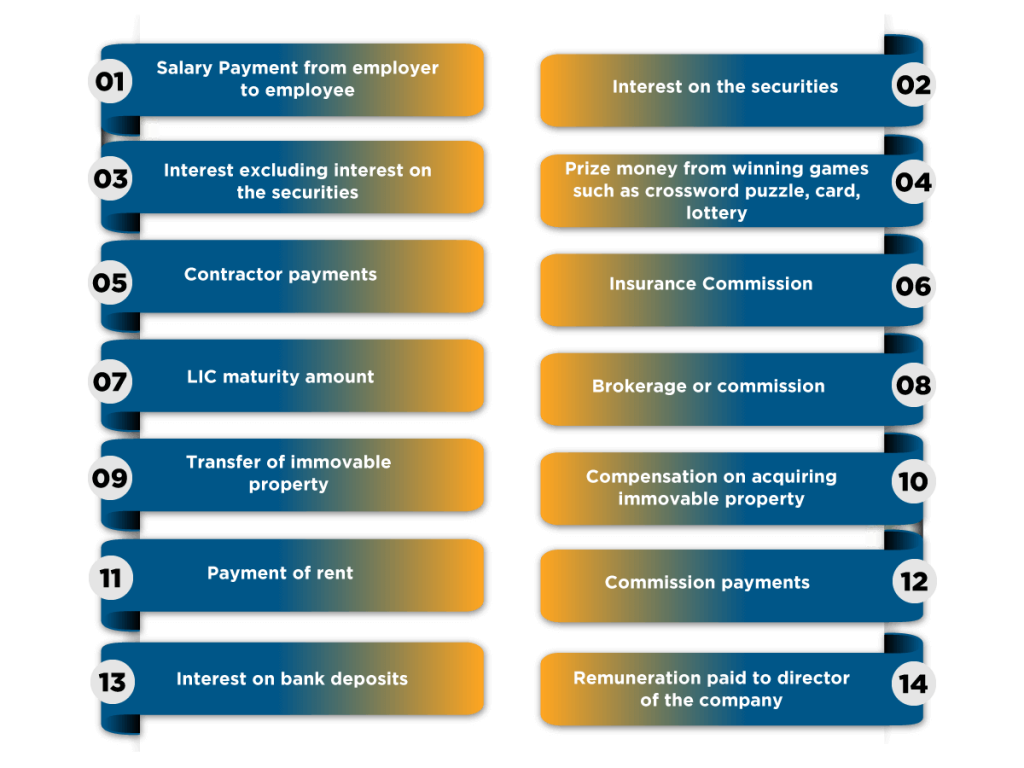Tax Deducted at Source forms a major part of direct taxation mechanism applicable to various heads of an income to collect taxes at the very source, i.e., at a time of payout.
The TDS deducted right at the source helps to check the tax evasion and also relieves the taxpayer from a burden of paying taxes at the end of the financial year. Hence, TDS certificate allows both steady inflow of revenue to the government and reduced financial strain for tax payers.
TDS Certificate u/s 203 of the Income Tax Act
According to Section 203 of the Income Tax Act[1], everyone who deducts tax at source must required to furnish the TDS certificate to the respective deductee specifying an amount deducted as tax, along with all other particulars.
In case of Salary Income
- The employer must provide Form 16 to employee specifying an amount of tax deducted at source.
- The form must have all the particulars related to computation, deduction and the payment of tax.
For Non-Salaried Cases
- The Form 16A is given by a deductor mentioning all details of tax deduction, computation, and payments.
- The TDS certificate requires to be issued to a deductee within 15 days of due date of filing TDS return.
- TCS Certificate (Tax Collected at Source): The certificate that contains an amount of TDS collected and deposited with a tax department. It is issued by Form 27D.
- Depositing TDS to the Central Government
- The deductor requires depositing TDS to central government by making a payment by NSDL using physical form which can be processed in authorized bank branches.
- The payment can be made online by an official portal of NSDL using Challan 281 and by routing payments by net banking.
- The amount deducted as tax requires to be deposited before filing TDS return.
- An e-payment is compulsory for all assesses who becomes liable for audit under Section 44AB.
What are the Types of TDS Payment?


Advantages of Tax deducted at source (TDS)
- It helps to prevent the tax evasion.
- The TDS deductions take place in the financial year; it is an effective mode of revenue inflow to government.
- It widens tax collection base.
- It is a way to share a responsibility of tax collection between the government and the deductors.
Important Points to Remember Before Deducting TDS
- Section 192 to 194L of the Income Tax Act can be referred to complete list of expenses and sources of income under TDS.
- If the individual does not fall under income tax slab, then he/she can furnish the Form 15G or Form 15H to a deductor as the declaration in advance for non-deduction of tax at source.
- Form 15H is for the senior citizens.
- Form 15G is for all other individuals.
- TDS is applicable to every type of income beyond a certain limit.
- TDS is deducted in accordance with the income tax slab rate for salaried individuals.
- For other deductees, the TDS is deducted at the specified percentage for each income type.
- Everyone who deducts TDS requires having TAN (Tax deduction and collection Account Number) in accordance with the provisions of Section 203A of Income Tax Act.
- TAN is a mandatory requirement for filing of the TDS returns. Moreover, it must be mentioned on a tax deduction certificate issued.
- TDS deductions are linked to PAN (Permanent Account Number). Hence, it is essential to have PAN details of the deductee to deduct tax at source.
- Every deductee requires presenting the TDS certificate to adjust an amount of tax deducted against a total tax payable.
- TDS details must be checked by Tax credit Form 26AS which is available to all PAN holders.
- The consolidated tax statement gives the clear details of TDS deducted on various types of payments.
Conclusion
TDS rates for non-salaried payments made to residents and TCS rates for a specified receipt have been reduced by 25% of existing rates. The new rates must only be applicable to payments other than salary, such as payment for contract, rent, professional fees, interest, commission, dividend, brokerage, etc.
The reduced rates shall be applicable for remaining part of FY 2020-21, i.e., from 14th May 2020 to 31st Mar 2021. It measure expected to result in the liquidity release of Rs. 50,000 crore.
Read our article: All about Benefits of TDS Return Filing in India











